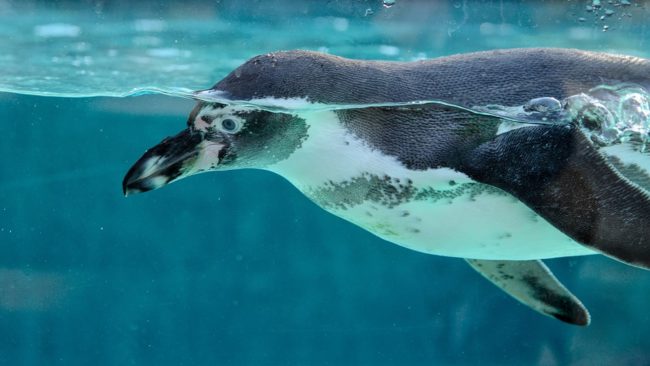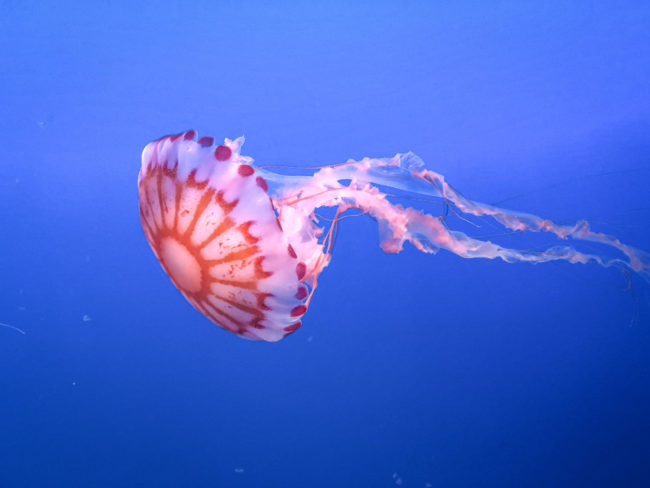Penguins are incredible flightless birds that are nothing like the birds you might see in your neighborhood. These birds have adapted to the cold temperature, adding to their individuality.
The majority of penguins live in the southern hemisphere. Countries like New Zealand, Australia, Chile, Argentina, and South Africa have a more significant population of penguins.
Unlike other penguins, Galapagos penguins can be found only north of the equator.
The Emperor penguins are the largest among the penguin’s species, which is 3.7 feet with 60 to 90 lbs. At the same time, the little blue penguins are the smallest, with 10 to 12 inches tall and weighing about 2.2 lbs.
Who are the penguins?
There are about 17 species of penguins found in the southernmost continent. All the 17 species, on the whole, are found exclusively in the Southern Hemisphere.
Unlike other penguins, Galapagos penguins can be found only north of the equator.
Penguins of all 17 species share the same essential physical characteristics. All the penguin’s bodies are elongated, smooth, and tapered at each end.
It is possible to identify penguins by coloring and markings based on their base hues.
Penguins’ stunning color is a matter of camouflage. Its black back merges with the ocean’s abyss from above. Beneath, its white belly amalgamates with the surface of the sea.
Most penguins are black at their back and white at the front. The fairy penguins have slate blue feathers.
The rockhoppers and the macaroni penguins have the most unusual yellow and orange feathers just above their eyes, giving them a comical look.
The penguin’s head is on a short neck, with small eyes hidden under the third eyelids. The ears are present under the hole covered by the feathers.
Bills vary in shape and length. Some are long and pointed, while some are short and round.
The emperor penguins have long, sharp bills, whereas Chinstrap penguins have short, round bills. The bills have spines inside, which prevent the prey from escaping.
The wings of penguins act like flippers that are utilized for underwater flying rather than for flight. The flippers are short, tapered with short feathers.
Penguins have short legs that allow for hopping in the land. Their legs are in the back, making it easier to walk erect.
The feet are webbed and equipped with claws that propel them through the water.
The penguins’ tails are short and chock-shaped, with 14 to 18 stiff feathers. Some penguins like Gentoo and Adelie have long tail feathers, which helps them prop upwards.
All the species of penguins use their tails to steer through the water. Penguins have strong bones, which helps them to dive quickly underwater.
For Instance: The fastest among the species are Gentoo penguins which can swim up to 22mph.
Penguins ingest a lot of seawater while finding their prey, but a special gland named the supraorbital gland filters out the saltwater from their bloodstream, which is excreted through their beaks while sneezing.
Penguins’ feathers are short and waterproof, intertwined between themselves. While swimming, the muscles control the feather’s movement by holding them tight to the body. While on the land, it helps to trap warm air beneath the skin.
Penguins, like most birds, lose their feathers at once during the molting process, which lasts around two to three weeks and is known as a catastrophic molt. During this time, the penguin cannot
Two kinds of penguins breed in enormous colonies that can number thousands.
Many penguins mate with the same species of opposite gender season after season. Similarly, most animals are devoted to their breeding grounds and return to the exact location where they were born.
The male penguins incubate the eggs, whereas the female goes hunting because the male penguins have enough fat storage, which helps them survive for weeks without eating.
Both the penguin parents care for their young ones for several months until they can hunt their prey independently.
Even though the penguins lack their visible ears, they have an excellent hearing ability by which they can recognize the distinct call to identify their mates in a large colony.
What is a Penguin’s Diet?
Penguins are proficient in the water. Hence their diets are mainly from the water. They primarily feed through Krill, small fish, crabs, and squids.
The penguins’ diet depends on their species and their habitat region.
For Instance – The smallest penguin, blue penguins, weigh about three pounds, whereas the giant penguins, emperor penguins, weigh about a hundred pounds. Their size determines the amount of food consumed by penguins. Some of the most common foods of penguins are listed below.
- Krill are tiny creatures that resemble shrimps and are available in all oceans and seas. They are almost 2 inches in size and can be observed even from space as they move in large groups.
The Krill is responsible for the majority of Antarctic life. Many penguins rely on Krill as it is their leading dietary supplement. The penguins like Adelie, Macaroni, King, and Chinstrap are the significant eaters of Krill.
- All penguins consume fish as small or giant fish in some form or another.
Emperor penguins eat fish as their primary source of food. Ninety percent of the diet of Emperor penguins is fish.
On the other hand, the Chinstrap penguins consume smaller fish like sardines, anchovies, herrings, and more. About four percent of their diet is mainly fish.
- Since squid comes seasonally, almost all penguins such as Emperor, King, Adelie, Chinstrap, and more consume squid.
Squid are alien-like creatures with big brains, eight arms, and two hearts. The intake of squid increases in summers as they are abundant in that season.
Penguins eat both the baby and adult squids, such as arrow squids and hooked squids.
- Penguins consume crabs as well. They have segmented bodies and are invertebrates.
Shrimp, crabs, hoppers, and other crustaceans are examples. Penguins can dive to depths of nearly 330 feet to collect crustaceans. However, some penguins do not venture over 150 feet.
- Shrimps are comparable to amphipods. Chinstrap penguins use this as their principal food.
Crustaceans have a hard-structured body, yet they don’t. They are the significant diet of some penguins and are available in icy areas.

How do penguins select their prey?
Penguins eat a limited number of marine creatures. By understanding the eating habits of penguins, it will be easy to conserve them by protecting those food resources.
Penguins eat the sort of food determined by their beak size, environment, and species.
One of the significant sources of food for penguins is fish. There are several kinds of fish consumed by the different species of penguins.
The size of the fish eaten is determined by the beaks’ size. The types of fish finished also depend upon the habitat of the specific species of penguins.
Silverfish, Lantern fish, Sprats, Pilchards, Opals, Sardines, Mullets, Anchovies, Cod, Jellyfish, etc., are the types of fish eaten by the penguins.
Even though they do not provide much energy, the penguins have sometimes left the Krill to hunt the jellyfish. It is almost a surprising element in the diet of penguins. Little penguins prefer jellyfish in abundance due to the climatic changes.
Since the jellyfish are far better than others in warming and acidifying oceans. Thus it had become the favorite food of little penguins. Aging and hunting experience will affect the taste of jellies in penguins.
Who are the jellyfish?
Jellyfish do not have brains, hearts, or eyes, and they have been around for about 500 million years.
Jellyfish are made entirely of water. Proteins, muscles, and nerve cells make up about 5% of jellyfish. The remaining 95% is made up entirely of water.
Jellyfish are not a type of fish because fish are vertebrates that live in water and breathe through gills, whereas jellyfish are invertebrates. They absorb oxygen through the membrane from water.
Some jellyfish are bioluminescent. It is the term for a creature to create its light. Due to these characteristics, jellyfish produce an internal glow.

Do Jellyfish And Penguins Live In The Same Habitat?
Penguins are flightless birds that primarily inhabit the Southern Hemisphere’s southernmost areas.
Penguins are observed in the Southern Hemisphere, such as Antarctica, New Zealand, Australia, South Africa, South America, and the Galapagos Islands, to mention a few.
The world’s oceans are home to jellyfish. Jellyfish may be found in all sorts of oceans since they follow the movement of water. They are available in mild ocean water and cold arctic water.
How do penguins hunt jellyfish?
The wings of penguins form a fin with solid bones and stiff joints, which makes them more comfortable in the water. This adaptive process helps them dive and propel under the water to catch their prey.
The hunting behavior of penguins is high-speed. When penguins intend to capture their prey, it moves under the surface. It deceives all its other prey to catch the jellyfish.
Once they have captured the jellyfish, they turn their direction suddenly towards the other prey to hunt them easily.
Penguins are very much dependent on their vision which helps them catch their prey even at nights or greater depths.
The bioluminescence behavior of some marine creatures like jellyfish enables the penguins to discover their food.
Penguins grab the jellyfish with their beaks. They have thorn-like structures in their tongues and stiff jaws, preventing the jellyfish from slipping.
They can also travel when food is scarce. When the water resources are not near, the penguins have to move to locate more food resources.
The foraging method for jellyfish is more complicated as they live in the water column, and the penguins have to drive under the water to catch them.
Why do penguins eat jellyfish?
Penguins eat jellyfish as they are low in calories. Gelatinous marine organisms such as jellyfish are considered dead ends in the food web. So most predators do not eat them as they are not beneficial.
However, a recent study found that penguins prefer gelatinous prey like jellyfish and high caloric foods like fish and Krill. According to research, the jellyfish can only give one to two percent of a penguin’s daily energy demands. But it is a question of why penguins shed most of their energy to catch jellyfish due to the presence of nutrients in the carnivorous jellies.
Another possibility is that the jellies contain a particular element called collagen fibers or amino acids needed by the penguins. The jellyfish are rich in fats and proteins, and also they are an easier target than fish.
Which species of penguins eat jellyfish?
Penguins are birds that cannot fly. Instead, their body has the necessary structures that equip them to swim underwater. Hence most of their diet comes from water.
The region in which habitat highly influences the diet they consume. The penguins from Antarctica and the Sub-atlantic area are relatively more minor.
The main diet of these penguins is small fish like jellyfish, and they eat them in larger quantities. The penguins in the Arctic are more significant than those in the Antarctic. Hence they eat fish as their main diet.
Notable species of penguins like Adelie penguins prefer jellyfish, whereas Chinstrap penguins tend to eat large-sized krills.
The amount of food the penguins eat depends upon the availability and time of the year because the quantity of food varies at different times of the year.
Final Thoughts
The diet of most of the penguins appears to be fish. But it is found that the penguins are fond of gelatinous sea animals like jellyfish.
The facts to get cleared with answers are indeed interesting. I hope you got the response to the factual discussion that happened one day with your friends or Family where you left the space filled with sheepish smiles.
Image Source
Penguin underwater / CC0
Jellyfish by World Wildlife / CC0
References
1. https://www.coolaustralia.org/fun-facts-about-penguins/
2.https://animals.mom.com/physical-characteristics-chinstrap-penguin-9512.html
3.https://www.mentalfloss.com/article/56416/20-fun-facts-about-penguins-world-penguin-day
4.https://www.animalwised.com/a-penguin-s-diet-what-do-penguins-eat-372.html
5. https://www.thezoologicalworld.com/what-do-penguins-eat/
7.https://www.animalwised.com/a-penguin-s-diet-what-do-penguins-eat-372.html
8.https://www.nytimes.com/2017/09/29/science/penguins-eating-jellyfish.html
9. https://hakaimagazine.com/news/penguins-love-jelly/
10. https://www.nipr.ac.jp/english/info/notice/20170929.html